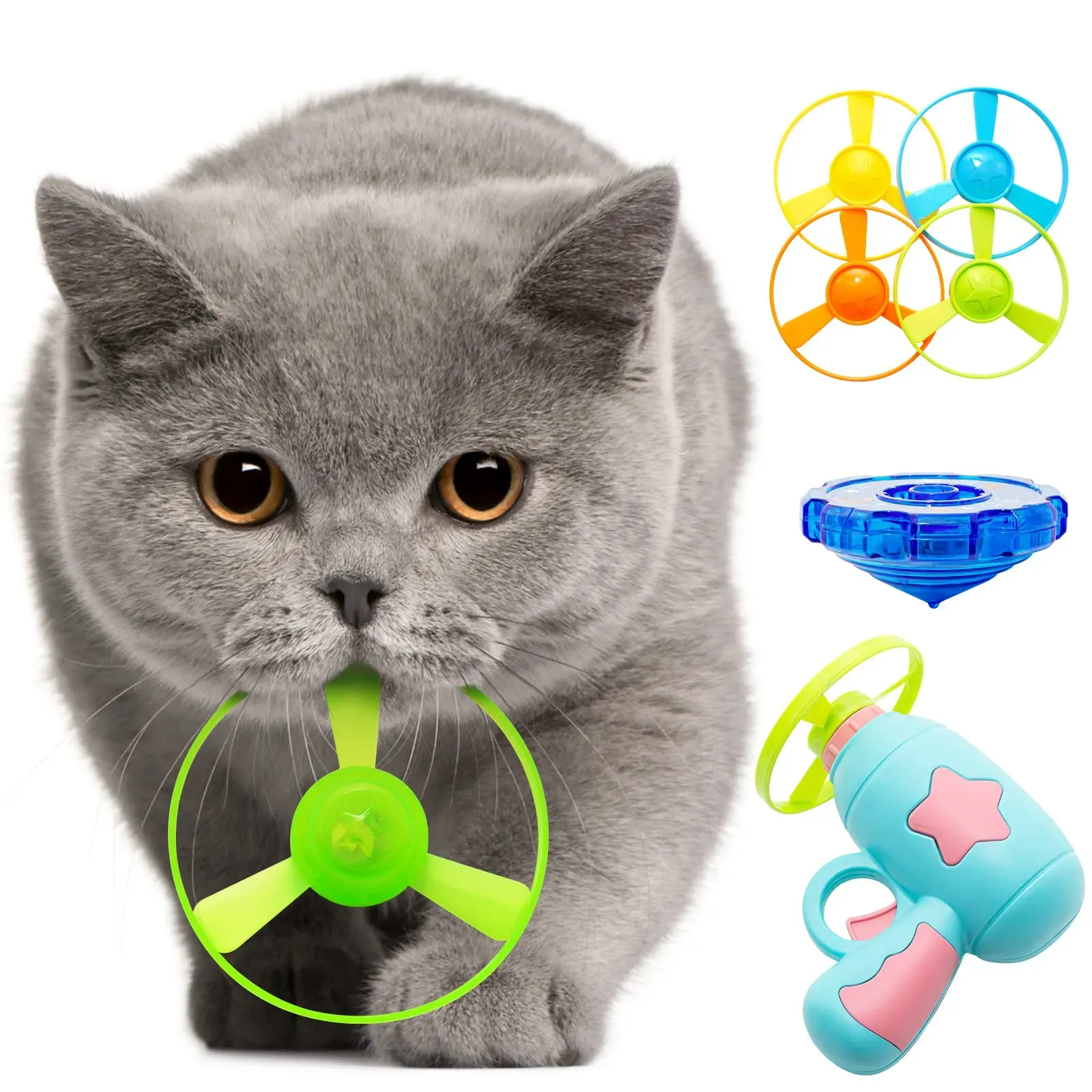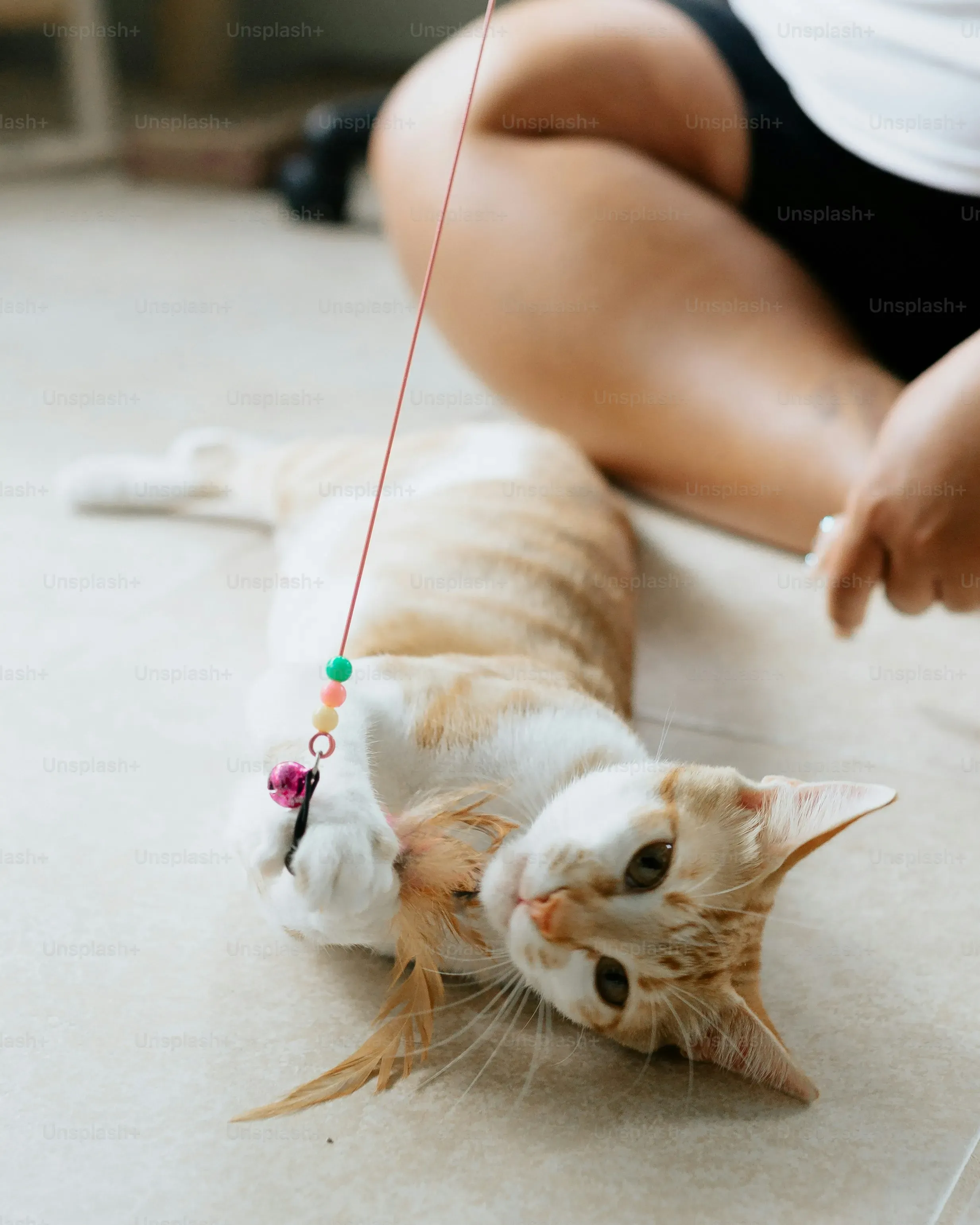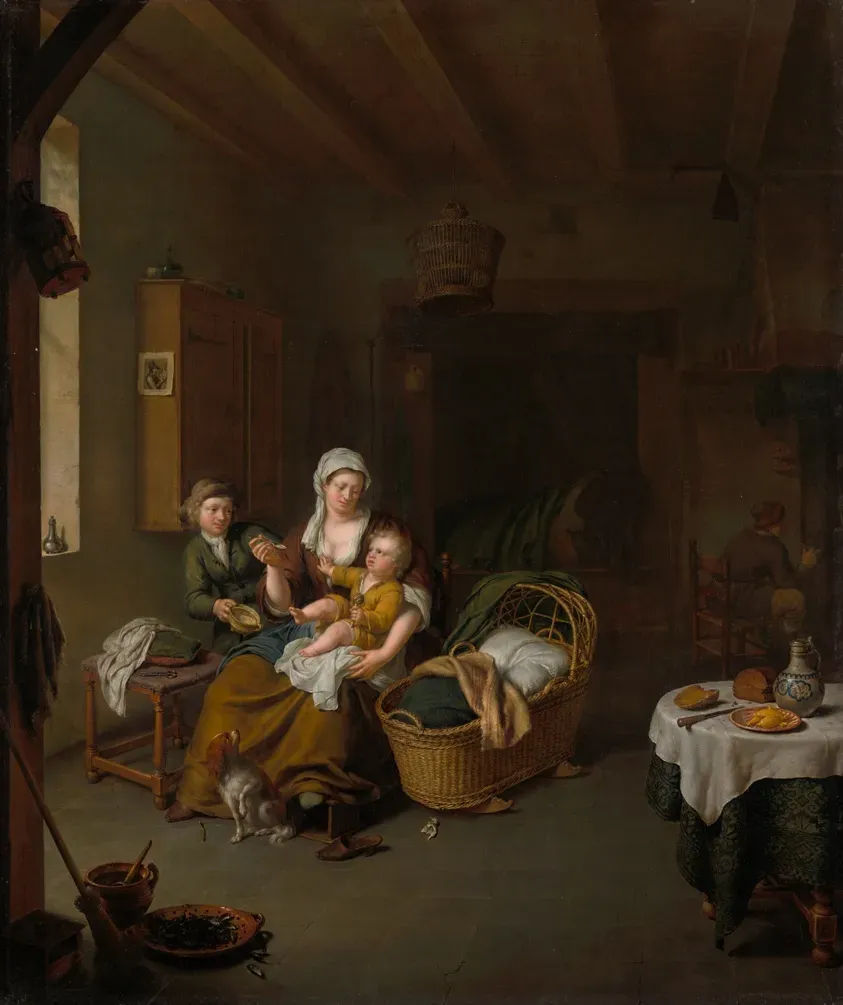Table of Contents
Think your cat is too cool for school, completely uninterested in chasing anything you throw? You might be surprised. While fetch is definitely a dog's classic game, a surprising number of cats absolutely love it. It's a fantastic way to provide mental and physical stimulation, satisfy their natural hunting instincts, and build a stronger bond between you and your feline companion. But let's be real, not just any old toy will do the trick. Toss a regular plush mouse, and you might just get a blank stare or a slow blink. Finding the right gear is crucial if you want to spark that retrieval drive. This is where the hunt for the best cat fetch toys begins.
Does Your Cat Fetch? Understanding the Urge (and Lack Thereof)

Does Your Cat Fetch? Understanding the Urge (and Lack Thereof)
The Hunter's Impulse and Play Drive
So, the big question: why do some cats act like miniature retrievers, happily bringing back that crumpled paper ball, while others stare at you like you've grown a second head? It boils down to their core programming. Cats are natural-born hunters. That chase, pounce, and "kill" sequence is hardwired. Fetch taps directly into the chase part. When you toss a toy, it mimics prey trying to escape. A cat with a strong prey drive and a playful personality sees this as a prime opportunity. They chase it down, maybe give it a few bunny kicks, and then, if the stars align and they're feeling particularly interactive, they might just bring it back to you. It's not obedience; it's often extending the "hunt" or seeking reinforcement of that fun chase.
Personality, Experience, and Expectations
Of course, not every cat is going to be a fetch fanatic. Breed can play a small role – some breeds, like Abyssinians or Bengals, are known for being more active and playful, potentially more inclined to enjoy games like fetch. However, personality and early experiences are huge factors. A cat that was encouraged to play fetch as a kitten, or one that simply finds the act rewarding (maybe you throw it again immediately), is more likely to continue. Then there are the cats who just aren't interested. They might chase it, sure, but bringing it back? That's just extra work. They've "caught" the prey; the game is over in their mind. Trying to force a cat to fetch is usually a losing battle. You'll both end up frustrated.
- Factors Influencing Cat Fetching:
- Individual Prey Drive
- Overall Playfulness
- Early Life Experiences and Training
- Breed Tendencies (Less Significant than Personality)
- Your Reaction (Making it Rewarding)
- The Toy Itself (Is it enticing?)
What Makes a Toy One of the Best Cat Fetch Toys?

What Makes a Toy One of the Best Cat Fetch Toys?
So, you're aiming to turn your couch potato into a fetch champion. Great! But you can't just grab any old thing off the floor. The question, "What Makes a Toy One of the Best Cat Fetch Toys?" boils down to understanding what triggers a cat's chase and carry instinct. Think about the size and weight – it needs to be small and light enough for them to easily pick up in their mouth and carry back. Texture is also key; some cats prefer something they can really sink a tooth or claw into slightly, like felt or natural fibers, while others like smooth, bouncy surfaces. Durability matters too, because if they actually catch it, it's going to get chewed, batted, and generally abused. And let's not forget the sound and movement – a little rattle, a crinkle, or an erratic bounce can make a toy infinitely more appealing, mimicking the unpredictable nature of actual prey.
Here are some traits to look for:
- Lightweight and easy to carry
- Small enough to fit in their mouth
- Appealing texture (felt, fur, crinkle material)
- Durable enough to withstand chewing and batting
- Contains sound elements (rattle, crinkle)
- Moves erratically when thrown
Our Picks for the Best Cat Fetch Toys

Our Picks for the Best Cat Fetch Toys
Classic Crinkle and Feather Combos
so you're ready to dive into the world of fetching gear. When people ask me about the best cat fetch toys, the first things that come to mind are often the simple ones that mimic actual prey. Think small, lightweight items with interesting textures and sounds. Crinkle balls are perennial favorites. They're usually made of mylar, they're super light, and that crinkly sound drives a lot of cats wild. You toss one, it makes that noise, and boom – instant chase trigger. Feather toys, especially small ones designed to be batted or carried, also work well. Some cats are absolutely obsessed with feathers, and a small feather wand tip detached (safely!) or a little feathery puffball can be perfect for a quick toss and retrieve.
You'll often find toys that combine these elements – a crinkle ball with a feather tail, for instance. The erratic movement of the feather combined with the sound of the crinkle is like a one-two punch for a cat's hunting instincts. My own cat, a notorious toy snob, will ignore a dozen fancy gadgets but goes absolutely bonkers for a simple crinkle ball. It's not about complexity; it's about hitting those primal buttons.
Wool Balls and Felted Wonders
Moving beyond the crinkle, felted wool balls are another top contender for the best cat fetch toys. These are great because they're soft, lightweight, and have a texture that many cats find satisfying to mouth and carry. They also tend to bounce a bit unpredictably, adding to the chase fun. Unlike plastic, wool is a natural material, which is a plus for many owners. Look for ones made specifically for pets, ensuring they don't unravel easily and aren't dyed with harmful chemicals.
Some companies make small, felted mice or other shapes that are perfect for carrying. The key is the size – small enough for them to get their mouth around comfortably. A ball that's too big or too heavy won't work. These toys often last a good while, even with enthusiastic chewing, and they don't make a ton of noise, which is nice if you're trying to watch TV while your cat gets their exercise fix. Just make sure the wool is tightly felted so they don't ingest loose fibers.
Toy Type | Pros for Fetch | Potential Cons |
|---|---|---|
Crinkle Balls | Lightweight, noisy, erratic bounce | Can be easily destroyed, ingested if materials come loose |
Feather Toys (small) | Mimics prey, visually appealing | Feathers can be pulled off and eaten, less durable |
Felted Wool Balls | Natural material, good texture for carrying, durable | Can unravel if not well-made, some cats ignore them |
Small Plush or Stuffed Toys
Don't overlook the power of the miniature plush toy. We're talking tiny, bite-sized stuffed animals, often filled with a bit of catnip (though catnip isn't necessary for fetch itself, it can certainly spark initial interest). These work as some of the best cat fetch toys because they often have a satisfying "give" when a cat bites down, like catching actual prey. The shape matters – mice, birds, or just simple geometric shapes work well. They need to be small enough for the cat to carry back, not drag.
Look for toys made from durable fabric with securely stitched seams. Avoid anything with small plastic eyes or other embellishments that could be chewed off and swallowed. A good fetch plush should be light enough to toss across the room but substantial enough that the cat feels like they've "caught" something. Some have rattles inside, adding another layer of enticement. It's about finding that sweet spot between size, weight, and texture that your individual cat responds to.
Tips for Fetch Fun: Getting Your Cat Hooked

Tips for Fetch Fun: Getting Your Cat Hooked
Tips for Fetch Fun: Getting Your Cat Hooked
Alright, you've got the potential best cat fetch toys lined up, maybe a crinkle ball or a felted mouse. Now comes the slightly trickier part: convincing your cat that this is the most amazing game ever invented. This isn't like training a dog to sit; it's more about gentle encouragement and making the activity incredibly rewarding *for the cat*. Start small. Toss the toy just a short distance away. When your cat chases it, great! If they bat it around but don't bring it back, don't get discouraged. The key is positive reinforcement. When they do something *close* to bringing it back – maybe they pick it up and drop it near you, or even just look at you after batting it – offer praise, a tiny treat, or immediately toss the toy again if that's what they seem to want. The second toss is often the biggest reward. Avoid chasing them to get the toy back; that just teaches them *you* are the retriever. Make it a game of them bringing it *to* you. Keep sessions short, positive, and end on a high note, even if they only fetched once.
Wrapping Up Your Fetch Quest
So, there you have it. The quest for the best cat fetch toys isn't just about throwing random objects and hoping for the best. It's about understanding what makes your individual cat tick, what textures and movements grab their attention, and being patient. Finding that perfect little item that triggers their inner hunter-gatherer can transform playtime from a solo batting session to a genuinely interactive game you both enjoy. Even if your cat never becomes a world-class retriever, experimenting with different toys and approaches is a win in itself – more activity, more bonding, and maybe a few good laughs when they bring back something completely unexpected. Give it a shot; you might just discover your cat's hidden talent.